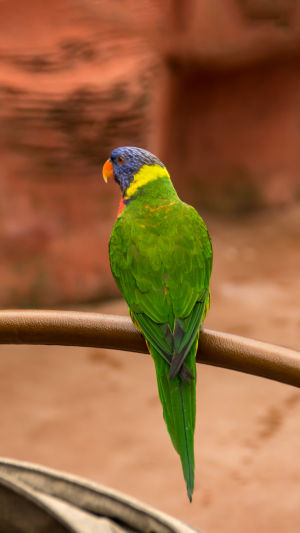When it comes to Lorikeet, we believe few people know about them nowadays, they have brightly colored feathers.
The beak is longer than that of other parrots, and there are brush-shaped hairs on the tongue inside the beak, making it easier to find food in the flowers.
The Lorikeet differs from other parrots in that it feeds mainly on nectar, pollen, and fruit.
Lorikeet mainly inhabits dense rainforest areas, forest fringes, gardens, and coconut plantations.
During the breeding season, nectar suckers move around in pairs or small nomadic groups.
Most sightings are when they are flying over tree tops or palm trees, as the contrast between the red and green plumage is quite obvious.
They usually prefer to rest on isolated trees and are quite visible when flying with an ear-piercing chirp.
Lorikeet feed mainly on pollen and nectar, soft fruits, etc. Lorikeet in captivity can be fed corn paste, apples, sugar cane, and other foods.
If possible, they can also be fed with nectar-sucking parrot powder.
In addition, Lorikeet love to bathe and are happy to do so even every day.
Before many friends like to keep Lorikeet as a pet, and they have many advantages.
For example good interactivity, strong speaking ability, relatives sticky, and good skills such as imitation ability.
The feathers are bright and beautiful, the body is leathery and does not die easily, and they love to play and are lively and cute.
Nowadays, although people are getting more sophisticated in breeding Lorikeet and even breeding them in captivity, fewer people like to keep them. Why is that?
Many friends will think that the price of such a good-looking parrot will be high, so they will think that part of the reason for not breeding it is because of the price. It is not.
The price is not low, but it is not ridiculously high.
The reason why fewer people are keeping it is mainly because of the following three reasons.
1. Too lively personality
The parrots are very active, and every time the owner speaks they will also follow the call.
They are louder than ordinary parrots, so they are more annoying to owners who like to be quiet.
So to avoid noise, we will provide them with enough variety of toys for them to play with.
But change them often, because their powerful beaks will quickly chew up new toys.
2. The price of food is too high
When we feed parrots, the most common food we feed is millet. They are different.
In the wild, Lorikeet mainly eats pollen or nectar, especially from coconut flowers, and some fruits.
When hand-feeding, we often feed corn paste, apples, and sugar cane. If the economy allows you can also feed special Lorikeet milk powder.
So, if we keep one, we may have to spend a lot on food, which is not affordable for the average person.
3. Easy to be accidentally injured
Lorikeets have sharp claws and beaks, so when you play with them, you may get scratched if you are not careful.
In particular, children should not be left alone with it, or it is likely to cause unnecessary harm to children.
If we cut or grind off some of its beaks and claws, they will show unhappiness and even reduce their food intake, which will take some time to recover.
This is why Lorikeet is becoming less and less popular.





